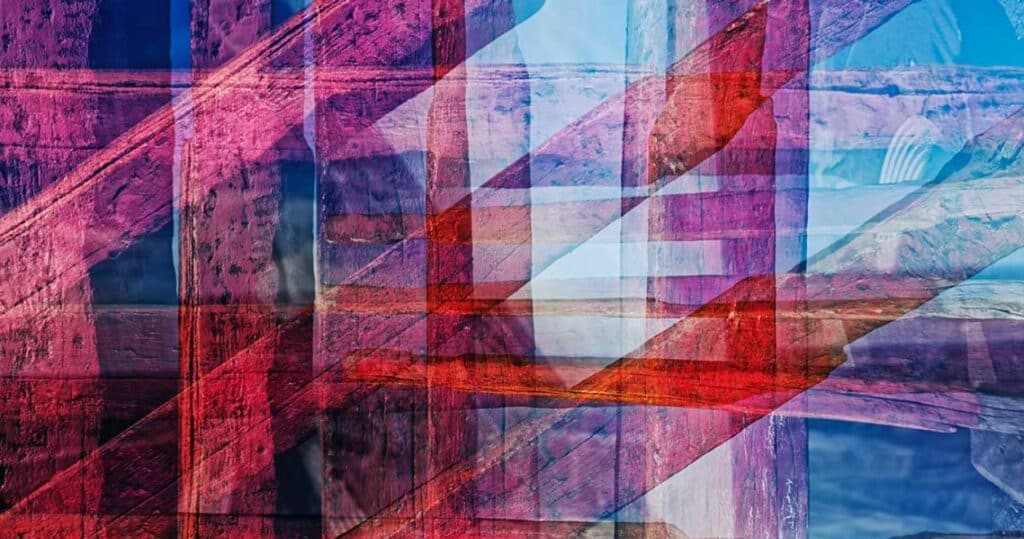In this investigation, “10 Famous Interactive Art Installations: by interactive artist “. We will delve into the works of 10 visionary artists who are pushing the boundaries of art through immersive and participatory experiences. These artists’ works will be examined in depth.
You have joined an interesting world where art goes beyond its usual limits and lets you be a part of the making process. People are changing how they think about the relationship between the artist, the artwork, and the public because of the rise of interactive art as a dynamic and interesting form of art.
Read more: 10 Best Art Movements of the 20th Century
10 Artists Pushing the Boundaries of Art Through Interactive Art
Our look into the world of interactive art is now over. It’s clear that the artists we’ve been looking at are the best at making experiences that are both engaging and challenging to traditional ideas of art. The unique ways they use technology, space, and audience participation make us think about what it means to be an audience and encourage us to be an active part of the creative process.
Yayoi Kusama: Infinity Mirrored Rooms

Key Aspects:
- Medium: Mirrored Rooms are immersive installations featuring endless reflections
- Interaction: Viewers actively step into the room
- Technique: concept of infinity through the repetition of mirrors and lights.
An important Japanese artist named Yayoi Kusama made one-of-a-kind rooms that she called “Infinity Mirrored rooms.” When we walk inside, we’ll see that there are many reflections of ourselves all around us. It’s almost like we’re in a wonderful mirror world!
The fact that we are a part of the art is really cool; it makes us feel like we are in a magical story where everything shines and lights up.
Olafur Eliasson: The Weather Project

Key Aspects:
- Medium: features a simulated sun that fills the gallery space with warm light.
- Interaction: Viewers actively engage with the artificial environment
- Technique: Eliasson’s work provides a multisensory experience
The Danish-Icelandic artist Olafur Eliasson used a sun simulator to make The Weather Project, a work that was shown at Tate Modern.
Everyone who saw the display was welcome to enjoy the sun simulator. Eliasson is able to turn the gallery into a place where people can think by changing the light and the room. So, people who come to the site are urged to talk to the artificial environment that has been made.
Rafael Lozano-Hemmer, Pulse Room

Key Aspects:
- Medium: Pulsating lights through their movements and heartbeats.
- Interaction: Room features hanging light bulbs
- Technique: Immersive and dynamic atmosphere
In his work titled “Pulse Room,” the Mexican-Canadian artist Rafael Lozano-Hemmer explores the possibilities that arise when technical progress and human connection come together.
The installation is comprised of a space that is totally covered with light bulbs that are hung from the ceiling. These light bulbs flash in sync with the participant’s heartbeat to create a visual symphony that is throbbing.
TeamLab: Borderless

Key Aspects:
- Medium: Real and virtual worlds
- Interaction: Creating a continuous and interconnected experience.
- Technique: Transforming the entire space into an expansive canvas.
Creating digital art experiences that are so immersive that they transcend the limitations of physical space is the mission of the Japanese collective known as teamLab.
It is difficult to differentiate between the actual and virtual worlds while guests are at the Tokyo location of teamLab Borderless since they are navigating a continuous digital terrain that is always changing.
Erwin Redl: Whiteout

Key Aspects:
- Medium: play of light and shadow
- Interaction: public spaces with cascading curtains of LED lights,
- Technique: Whiteout integrates with the architectural space
The Japanese collective known as teamLab is responsible for the creation of digital art experiences that are so interactive and immersive that they go beyond the confines of physical space.
When visiting the Tokyo location of teamLab Borderless, visitors are able to navigate a continuous digital landscape that is always changing, which makes it difficult to differentiate between the actual world and the virtual world.
Random International: Rain Room

Key Aspects:
- Medium: employs motion sensors and water-detection technology
- Interaction: Random International’s Rain Room allows participants to control the rain
- Technique: Human presence make each experience in the Rain Room unique and unpredictable.
Random International, a collective based in London, has created an artwork with the title “Rain Room,” in which they encourage guests to take control of the precipitation.
Through the utilisation of motion sensors, the installation supplies participants with the ability to move through a downpour without becoming wet. The participants’ feelings of control and interaction with the work are challenged as a result of this feature.
Carsten Höller: Slides

Key Aspects:
- Medium: feature giant slides that redefine the museum experience.
- Interaction: museum into a space of interactive exploration.
- Technique: Creating an environment that encourages physical interaction and exploration.
People are seeing museums in new ways thanks to Belgian artist Carsten Holler’s big slides. A lot of his work is in art galleries and museums all over the world. A big part of them is these shots. They make people happy and full of excitement like they were as kids. Going to the gallery with them is like going on an exciting adventure.
Holler’s slides are more than just structures; they let you experience art in a new way. While going down these huge chutes, people are actually a part of the art story. People who like art get a rush from this. People think about how they normally use museums when they see these strange works, which makes the space fun and interesting.
Choi+Shine Architects – The Wind Portal

Key Aspects:
- Medium: Dance of light and shadow
- Interaction: emphasizing the participatory element in the creation of the artwork.
- Technique: The Wind Portal transforms public spaces,
The Wind Portal was designed by Choi+Shine Architects, who are well-known for their pioneering approaches to various forms of public art.
This mesmerising display of light and shadow is generated by an interactive installation that consists of thousands of rotating flaps that respond to the movements of passersby.
Daniel Rozin, Wooden Mirror

Key Aspects:
- Medium: Wooden mirrors utilise wood as their primary medium.
- Interaction: The artwork explores the intersection between the physical and the digital
- Technique: woodworking and technology
Daniel Rozin made the Wooden Mirror, an interactive piece of art that questions ideas people have about reflection.
This work, which is made up of hundreds of wooden tiles that can rotate to look like the viewer, encourages people to get involved and think about how the real and virtual worlds are connected.
Riusuke Fukahori: Goldfish Salvation

Key Aspects:
- Medium: three-dimensional goldfish that appear suspended within the artwork.
- Interaction: observational and contemplative
- Technique: labor-intensive process of layering resin to form the three-dimensional goldfish
“Goldfish Salvation” by Riusuke Fukahori has amazing 3D goldfish that look just like the real thing. He uses a really cool stuff called plastic to make these fish look like magic. Looking at his art is like entering a magical world; the fish seem to swim right off the canvas, making the experience enthralling and full.
Fukahori is good at making art that shows the spirit of life and movement. This makes it not only beautiful to look at but also an interesting way to learn about truth and depth. Each fish seems to have its own charm and story, which adds to the magic of the piece. An artist can take something so plain and turn it into something so lively and alive. People feel and think about his work when they read it.
Read more: How to Make Art Prints at Home: 8 easy steps
Verdict
We have finally reached the end of our look into the world of interactive art. It is clear that the artists we have been looking at are leaders in creating immersive experiences that challenge standard ideas of art. Through the creative ways they use technology, space, and audience involvement, they make us think about our usual roles as viewers and encourage us to be an active part of the creative process.
If this article was informative, please do not hesitate to share it with your acquaintances on X (Twitter) and Facebook. We shall continue to commemorate the transformative power of art and its profound significance in our lives.





